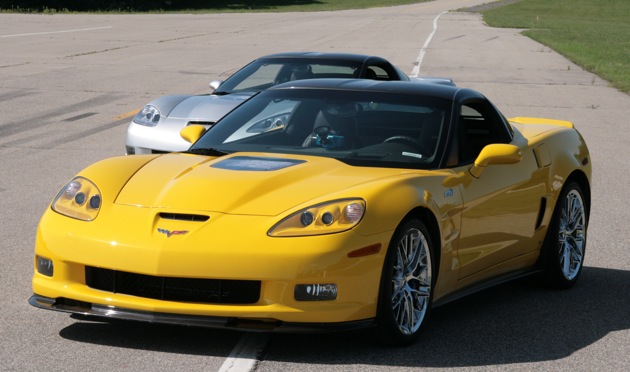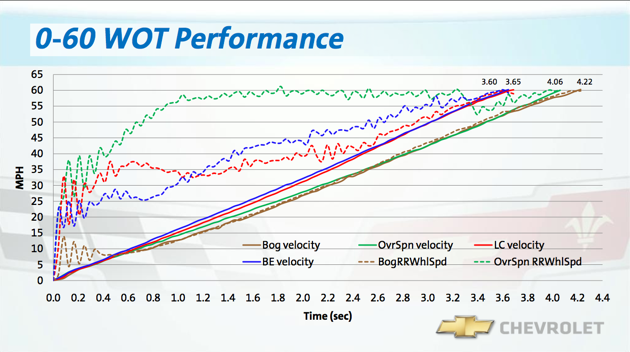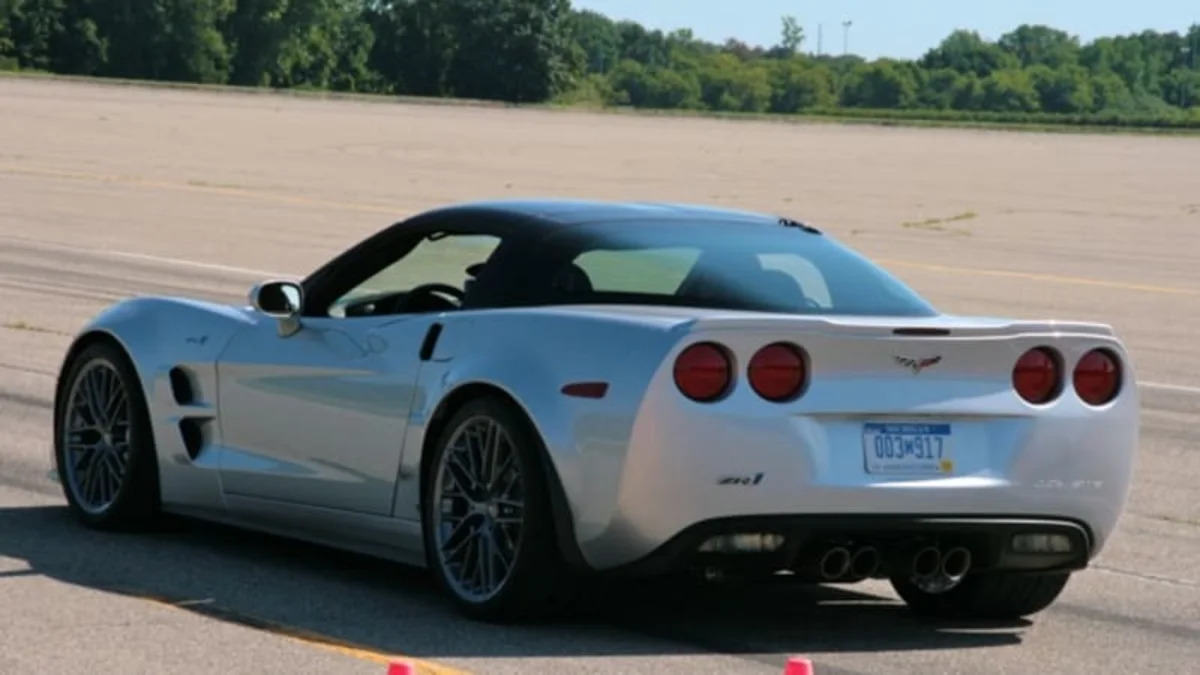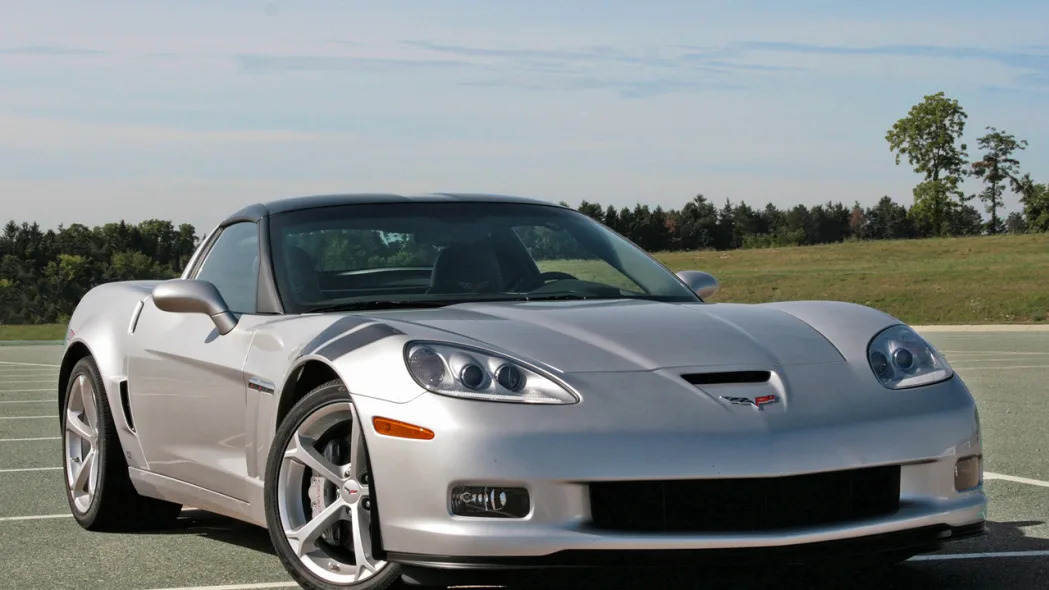Aside from the addition of the Grand Sport model, the biggest upgrade to the 2010 Chevrolet Corvette lineup is arguably the addition of launch control. The Corvette is by no means the first sports car to get launch control, but judging from our first impression of it this week, it may well be the best system out there.
Unlike a certain Japanese competitor, General Motors' Corvette chief Tadge Juechter made it eminently clear this week that use of the car's launch control will in no way kill your warranty. In fact, he explained that while a highly skilled driver could potentially beat the launch control system by a bit, the vast majority of drivers will find themselves getting of the line much more quickly and with markedly better consistency. Let's take a look at how the system works after the jump.
Photos copyright ©2009 Sam Abuelsamid / Weblogs, Inc.
For 2010, all manual transmission Corvettes from the base model up to the ZR1 get Chevy's new launch control system. For now, at least, buyers of automatics will have to continue either managing their own wheelspin or let the traction control do it. Launch control is essentially a special mode of the traction control system designed to optimize acceleration from a standing start on high mu surfaces (roads with a coefficient of friction). The basic problem is that traction control tries to minimize the amount of wheel slip. Accelerating quickly always requires some degree of wheel slip, as utilizing the available grip of dry pavement requires having the engine revving near the peak of its torque curve.

During traditional traction control, when the system detects wheel spin, it can pull the engine torque down out of the best part of the torque band which can result in bogging. The problem is that slip control systems look at the way the wheels respond to torque inputs to try and detect what kind of surface the car is on. If the surface detection is off a bit, the system will restrict slip excessively, causing the aforementioned bogging down. Conversely, if it thinks the car is on a high traction surface when it isn't, it can allow too much slip.
Some other cars require the driver to jump through all sorts of hoop to engage launch control. For example, the Audi R8 requires pressing several different switches in the right sequence, pressing the brake, flooring the throttle and then releasing the brake. The Corvette, on the other hand, is a piece of cake: Put the traction control in 'competitive mode,' floor the throttle and then dump the clutch. Flooring the gas is the key. The launch control system looks at the throttle input and if it goes from zero to wide open throttle in less than a pre-defined time, it assumes the driver is looking to make a fast getaway.

When that happens while the car is standing still, the engine revs up to about 4,000 rpm and just stays there. At that point, the driver can just side-step the clutch and the car takes off with some controlled wheel spin. As the Vette accelerates, you can hear the engine giving off a rather unflattering belching, farting exhaust note, but the speed just climbs steadily and rapidly. During normal traction control usage, the system uses a combination of throttle manipulation, spark retardation and fuel shutoff to manage engine torque to the desired output. Some brake application is also used to control wheelspin side-to-side.
During launch control, only the spark and fuel control is used. The throttle is held steady because of the lag in response and since the time span for launch control is so short that it isn't needed. The response time for torque to change with throttle manipulation can be up to half a second. Spark and fuel adjustments can bring torque adjustments in in 10-15 milliseconds, and those tinkerings are what give the odd exhaust note.
So how well does the system work? Phenomenally well. We sampled launch control in a 2010 ZR1 on GM's "Black Lake" vehicle dynamics area. The asphalt on the pad is about 15 years old and not terribly grippy unlike the much newer pavement on proving ground's north-south straightaway, but it was all we had to work with. We started off with a best effort launch with the traction control completely off. We were able to achieve a good, smooth launch and clean getaway, feathering the throttle along the way without bogging, recorded a 4.06 second 0-60 mph time as seen on our Racelogic Vbox.
%Video-657%
After a lap around the pad that allowed everything to cool, we came to a stop and switched on the Corvette's launch control. Flooring the gas, we waited momentarily for the revs to settle in and then dropped the clutch. Off we went, bursting to a 3.72 second run to 60 mph. Two subsequent runs matched that time within 0.01 seconds. A highly experienced driver might be able to top those times, by a bit – but we reckon that few would be able do it as consistently launch after launch.
All this, with a full factory warranty!



Sign in to post
Please sign in to leave a comment.
Continue